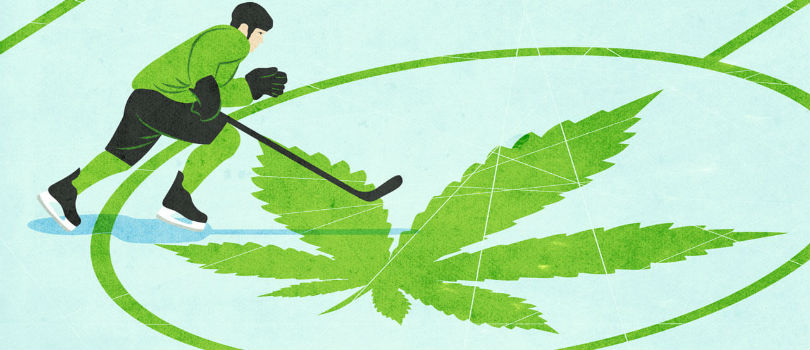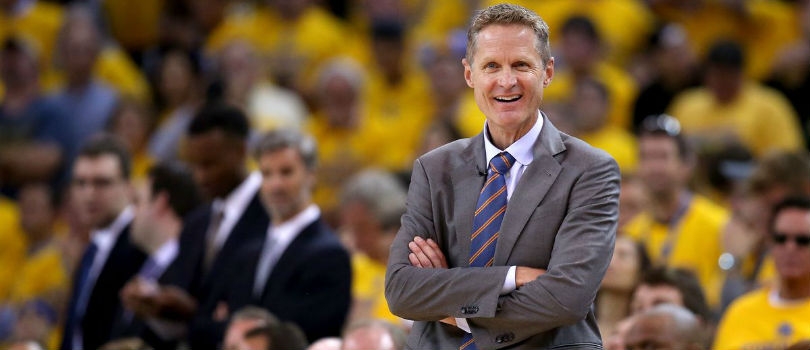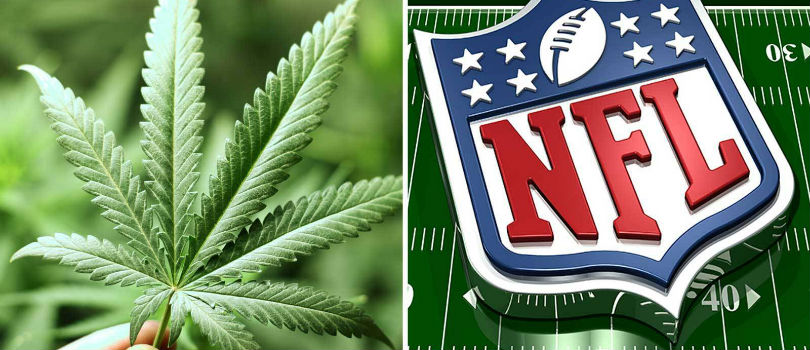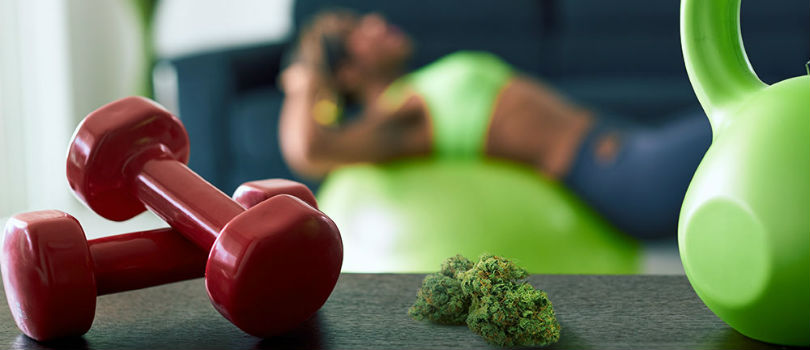Does Cannabis Have a Place in Sports?
Marijuana’s effect on sports performance and recovery. States across the country are choosing to legalize cannabis, and studies being done on the benefits it can have, it’s no surprise there is a rise in potential applications in the sports world. Not to mention the opioid epidemic currently happening today, the potential for other options for pain relief have also risen.
States across the country are choosing to legalize cannabis, and studies being done on the benefits it can have, it’s no surprise there is a rise in potential applications in the sports world. Not to mention the opioid epidemic currently happening today, the potential for other options for pain relief have also risen.
What do we Know?
Marijuana may be legal in some states, but it is still illegal at the federal level. Because of this, scientific research on applications for its medicinal use have been sporadic at best. Only recently have these studies ramped up.
Weed has been used for nausea and pain in cancer patients for decades, since then, the questions as to what else may it help have grown. People suffering from anxiety, seizures, and PTSD have also benefited from its medicinal properties, so the search for use in the sports world seems obvious.
Marijuana and Sports Leagues
Currently, of the major professional sports in the United States (NFL, NBA, MLB, NHL, MLS), only the National Hockey League has removed marijuana from its banned substances list. One of the major issues barring sports leagues from accepting marijuana use is its legality. At this point, ten states have fully legalized cannabis. This means it is legal for recreational use, medicinal use, and has been decriminalized. Twenty-two have legalized it for medicinal use only. The remaining states have professional teams within them, which makes the leagues removing weed from their banned list tricky.
Currently, the NFL tests its players up to five times within the calendar year. The NBA can test a total of six times in that same time frame. If a player fails the test, they must be entered into some type of program, usually depending upon their history with the current drug policies within their respective leagues.
A player could still be on the hook for legal troubles regardless of what the league says. Some players still take the risk, whether they use it recreationally, or for treatment. Which begs the question; is there a real use for cannabis in sports?

Only the National Hockey League has removed marijuana from its banned substances list.
What needs to be learned?
Pain goes along with sports just as a coat goes along with northern winters. The current treatment of pain within and without the sports world has-whether directly or indirectly-led to illicit drug use, addiction, and overdoses that have skyrocketed over the past several years. With what we know about marijuana, the lack of addictive properties, and low chance of overdose, cannabis may well be a successful treatment for pain.
Many studies have also been done to test whether marijuana can have a
performance enhancing effect. Many have concluded that there is none, individual athletes have actually said it does help his performance. In a Men’s Journal interview triathlete Clifford Drusinsky says it helps him, relax, and focus on his form when he is training.
Cannabis & Fitness: Pros vs Cons
Risks can come with any decision. This one is not an exception. Muscle and Fitness recently did an article laying out the possible benefits and drawbacks of cannabis use in sports.
Among the potential positive outcomes of its use are its pain-relieving effects. Marijuana has anti-inflammatory properties, and the most common sports injuries are from the inflammation of tendons and ligaments. Muscles can also become sore during exercise, and spasms can occur. Treatment for multiple sclerosis and Parkinson’s have shown positive results, so the application here seems evident.
Focus, and positive mental health can also be beneficial. Rest and sleep can be mitigated when medicating with marijuana or its extracts.
But as stated above, there are risks. Lung damage, impaired motor-skills, and an increased risk of heart-attack can result from cannabis use. Dosage and drug administration can lessen the risks of these issues though.
Some studies have reported that marijuana use can increase pain sensitivity. Live Science reports that one study in particular indicates that cannabis users reported higher pain levels after car accidents than those that do not use.

Risks can come with any decision. Cannabis use in sports is not an exception.
Pain and Recovery
The opioid epidemic has increased the search for other ways to treat the effects of playing sports. We touched on this earlier, but now we will do a deeper dive into how cannabis can improve or negate recovery from injuries.
Washington Redskins offensive lineman Trent Williams has twice been suspended for his marijuana use. Even with that fact he has openly said that while he was wrong, and may have been able to do something different, the point is to feel as good as possible, and to be available every week. For him, this meant using cannabis for pain relief.
The flipside of managing pain through cannabis, is that while it has less negative effects, it’s illegal to use. But opioids are allowed in professional sports for pain management, even with the known-and widespread-negative impact.
According to the U.S. Department of Health and Human services listed over 10 million people reported misusing opioids, while over 40,000 have overdosed on them. The choice to use something other than addictive pain meds, even if that means being punished by the league, says something.
Golden State Warriors head coach Steve Kerr admitted suing marijuana to deal with complications from a procedure he had on his back. Scientifically, the results cannabis can have on treating pain are present. Certain nerves that detect pain, are also receptors for cannabis.

Golden State Warriors head coach Steve Kerr
Cannabis use while training
There are conflicting reports and messages as to the benefits of cannabis and its extracts-cannabidiol (CBD). Marathon runners such as Colorado-based Avery Collins uses low doses of cannabis through the extracts during his training. Citing the effects it has on his focus and relaxation, he doesn’t use during competition, as to abide by the rules, but does use in the pre-competition phase.
Gyms have popped up in states where cannabis is legal, where trainers that are educated in the ways it can enhance training (but not performance), and teach its members how to use it successfully. There seems to be a balance, at low doses (5-20 milligrams) it has enhancing effects on the mind, and the body. Helping with soreness and spasms, and the ligament and tendon inflammation experienced during training, the extracts can be better than taking over-the-counter non-steroidal anti-inflammatory drugs (NSAIDs), such as ibuprofen (Advil, Motrin) and naproxen (Aleve).
But the use during training should stop there, and stay away from the smokable marijuana. Many of the same chemicals found in tobacco can be found in marijuana. This, and the effects smoking anything can have on the lungs, and overall breathing should be noted as well. Studies have found that smoking cannabis can cause tachycardia (heart attack), low blood pressure, depression, anxiety, and dizziness. None of these are beneficial during fitness training.
Athletes’ Access to Cannabis
Then there’s the process of obtaining cannabis and its extracts. In states where the drug is legal, this isn’t much of an issue. But in the many states where it isn’t, legality does come into play.
In regards to professional sports leagues, removing marijuana from the banned substance list has this current issue. In states such as Tennessee, where marijuana is not legal in any fashion, NFL’s Tennessee Titans, NBA’s Memphis Grizzlies, and NHL’s Nashville Predators all face this problem. While it isn’t on the list for the NHL, it still is an issue for players who get into legal trouble for using. And it isn’t part of the treatment plans for recovering from sustained injuries.
If the leagues are to remove the ban, regulation of access has to be at the forefront. But to begin, the use of cannabis should have a purpose. Many of the players use recreationally, know the risks, but do it anyway. The NFL releases the times when the players will be drug tested, so, many are able to adjust their private lives. And it remains a secret. This cannot happen if the league is to make it part of its medical policy.

The NFL releases the times when the players will be drug tested, so, many are able to adjust their private lives.
Risks of trusting recent studies
In the United States, marijuana is a Schedule I narcotic. Basically, this means the government has found that there is no medical use for the drug. This reduces the amount, and the quality of these tests.
Also, it is necessary to note that tests performed in states where cannabis is legal can be skewed, when comparing against those done in states where it isn’t. Part of the testing phase includes reporting use. While usage worldwide may be on the rise, people are more likely to admit to the use of a legal substance, over the use of an illegal one.
Individual athletes are raving over the benefits from using cannabis as treatment. This cannot be ignored.
Another issue with these studies is that they do not follow strict guidelines. Testing one drug against a placebo alone, doesn’t render the results as positive as one would think. It would better the study if the drug was also tested against another drug meant to perform similarly, along with the placebo.
Conclusion
As we have said before there are risks and benefits to every decision we make. There are studies that have reflected both sides to the argument, but what should be noted here, are the personal experiences among professional athletes. Many of the studies were not done on sports-related injuries, rather, car accidents, and disease-related pain.
The basic conclusion to the research is the same with almost every other type in the medical and sports-related treatment areas; more research is needed. But to swing the pendulum to a safer side of pain management and mental health, we believe the evidence is there.
The opioid epidemic is serious. Just as mental health and pain relief. Maintaining both with addictive prescription medications can be extremely dangerous. Maybe more dangerous than beneficial. So, to have other options available to athletes is a major concern.

When pro athletes speak out against cannabis use it is usually about legalities, and how the public-especially young fans-see marijuana use as a cool thing to do, and if their favorite player is a known user, it could have the adverse effect.
With the advances in the thought-process about marijuana, and the social standards coming to the positive side of the use of it, finally getting it off the Schedule I distinction seems imminent. This is the biggest hurdle to really getting the true picture of the positive and negative aspects of the drug to the forefront. As long as it is federally deemed illegal, and carries that distinction, it cannot be formally and accurately tested.
Excessive use of anything can render even water a bad thing, and knowing what types of strains and extracts that have the beneficial properties is extremely important. Education on these topics should be what is most important. Using a good thing improperly can be worse than using a bad thing properly, so make sure that you talk to someone with extensive knowledge, or do your due diligence in your research before adding cannabis to your workout or recovery regimen.
Other FAQ:Q: Does Marijuana affect sports performance?
A: Studies show that smoking marijuana or anything can damage our lungs. Studies have also shown that Marijuana can aid in recovery as it has anti-inflammatory benefits and aids in sleep, both of which help the body recover during training. Marijuana has been shown to enhance performance by an increase in focus, reduce pain, and lower anxiety, which can improve sports performance.Q: Why is Marijuana banned in sports?
A: A substance is banned when it is deemed to meet 2 out of 3 criteria; It’s a performance enhancer, a health risk, or go against a sport’s code of ethics. Since marijuana is illegal at a national level that violates the code of ethics for most sports. Combined with it’s potential for performance enhancement it’s no surprise it is banked in sports.
